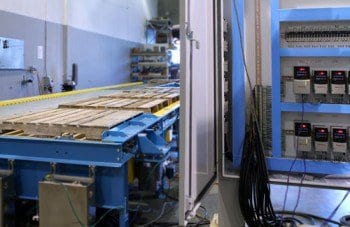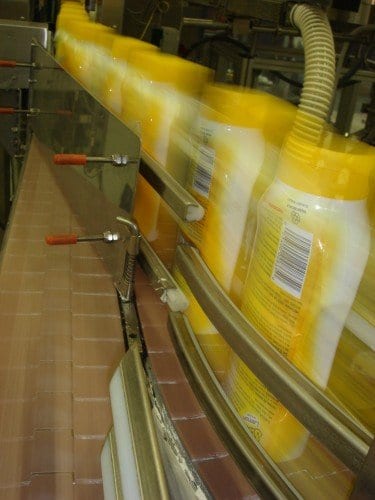 Line integration has changed over the years. It’s not just about making several machines work together through controls and mechanical adjustments. New technologies such as machine vision and robotics have made more possible with less, but have also created new challenges for automation experts. New emphasis on line efficiency analysis, demands for validation assistance and the increasing desire for turnkey solutions are permeating the market. It is essential to ensure multiple software platforms are compatible on every machine so the control system is a base for the software to build.
Line integration has changed over the years. It’s not just about making several machines work together through controls and mechanical adjustments. New technologies such as machine vision and robotics have made more possible with less, but have also created new challenges for automation experts. New emphasis on line efficiency analysis, demands for validation assistance and the increasing desire for turnkey solutions are permeating the market. It is essential to ensure multiple software platforms are compatible on every machine so the control system is a base for the software to build.
So what does this change mean? Those looking at implementing line integration changes should budget more time into the project. “For packaging particularly, projects can be quite time-consuming,” says Bill Owens, founder and chief technical officer of Owens Design Inc. (Fremont, CA). “Often, not enough time is allowed, and the materials themselves can become an issue when you put them on high-volume, high-speed machines. In most other industries, you are not dealing with the complexity and irregularity of materials as much as you are in packaging.”
It can also mean that maintaining line speeds has to be balanced against line flexibility to carry different types of products and technology limitations. If your proposed vision systemcan only find 3 out of 10 defects at the line speed that you want, but can find all 10 at a lower speed, which is more important? “Customers continue to challenge us with the combination of delivering the highest line speeds possible while also being able to handle broader size ranges of products within the same line configuration. It’s all about optimizing speed and flexibility,” says Dave Schuh, vice president of sales and marketing for MGS Machine Corp.
This requires programmers and automators to be highly skilled in some specific areas. “You need to be much stronger in programming and electronics,” says Stewart Harvey, business unit manager for equipment, DT Packaging Systems (Leominster, MA). “Often, complete line monitoring systems that receive feedback from each machine, from reject rates to downtime, are involved.”
But these advances are not without their drawbacks. Software based systems increase the chances of changes in one area creating unintentional problems in other parts of the system, or circumventing safety systems. Robots, another technology that is becoming increasingly popular, can cause space issues with their large footprints and can drive costs up.
With everyone moving towards automated solutions, many OEM’s today fight the urge to become custom solution providers. It can be difficult to provide an automation friendly or integration ready machine with standard parts.

David Richmond, discipline sponsor: controls group for Lockwood Greene Engineers Inc. (Cincinnati), adds that control technology “is not necessarily newer, but suppliers are assembling more-appropriate features for OEMs. It is easier to apply the technology than it used to be.”What everyone wants these days, he says, is information. “There are more requests for real-time monitoring of the production facility and real-time data collection and report generation. So that has become more a part of the integration process.”
The Bottom Line
What most people are looking for is a company that can provide them a turnkey solution and expert’s to navigate all of the challenges associated with these new technologies.
“We’ve seen the industry change quite a bit in the last 10 years,” says Carl Larson, project manager, Bosch Packaging Technology (Minneapolis). “In many cases, our customers’ human resource numbers have dwindled in the project management and engineering disciplines. There is now a clearly defined need to have a single firm be responsible for the entire integrated line through installation and full qualification. In the end, this is a more efficient way to manage the project, since most of the information needed for a successful integration and qualification originates with the equipment supplier.” Harmonizing Line Integration by PMPNews.com)
Where can you find such a company? (Hint: You are reading thier blog right now).
EPIC Systems is a turnkey automation, line integration and machine vision solution provider, located in St. Louis, MO. Visit our website to learn more about EPIC, or contact and engineer today.